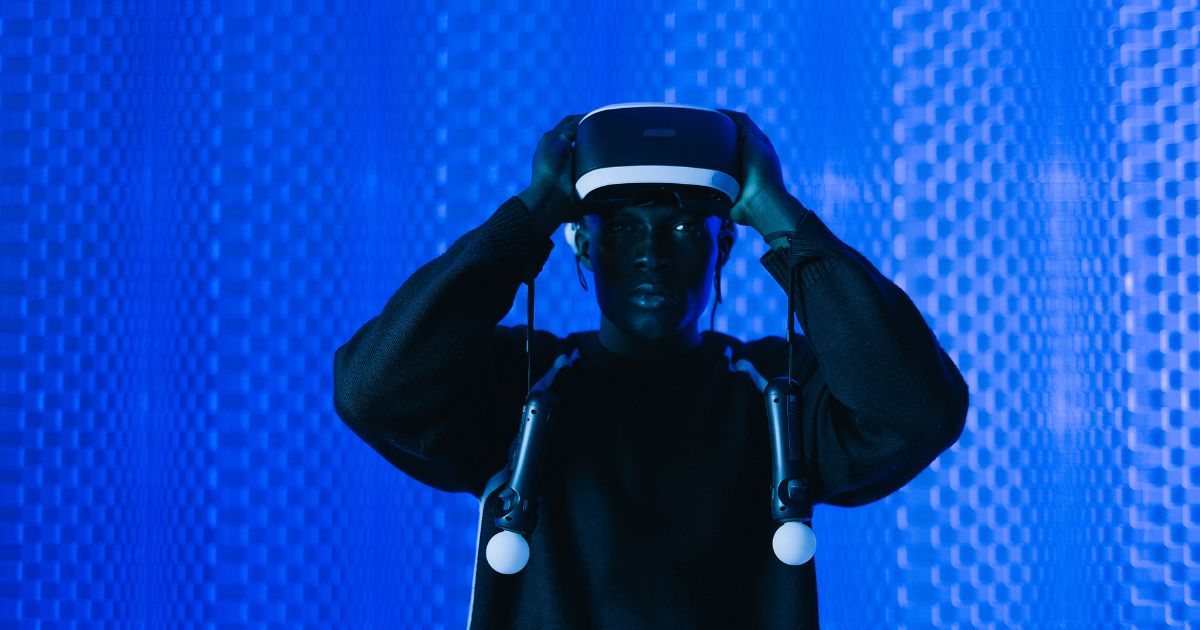From the number of emerging trends over recent times, one of the most futuristic (and by that I mean right up there with flying cars) would be Virtual Reality, or VR. However, another term has also been making its way to the forefront. This would be none other than AR (Augmented Reality). Following that, in the background, we hear whispers of a term called MR or Mixed Reality. What are the differences between the three? Or are they one and the same?

Virtual Reality
Virtual reality, as the name suggests, is a virtual (or computer generated) scenario. It stimulates the real environment. It has no relation whatsoever to the actual environment the user is in, nor does it interact with the real world.
This is to date the most effective method to command attention. That is because the user will be fully immersed in the experience with no outside distractions.
Augmented Reality
Augmented reality has a less invasive procedure. What it does is overlay the real world (seen through our device’s camera etc) with digital components, effectively enhancing the existing environment. However, the digital components are not anchored to the real world content, neither do the two interact.
Mixed Reality
Mixed reality, sometimes referred to as hybrid reality (yes, all the terms get confusing) is the mixing of real and virtual worlds. This produces a dimension where physical and digital objects co-exist and interact with each other.
It should be noted however, that many people aren’t aware of the slight difference between AR and MR, thus the terms are currently being used interchangeably. As in all such cases, one term (AR) is winning over the other.
So what do these do?
Currently, AR and VR are appealing mainly because of their huge entertainment value, but their uses are definitely more than that.
Academic Purposes
In the education sector, VR and AR can be employed to give students a full on experience of lessons they would otherwise have huge difficulty in having. For example, students training to be pilots or train drivers can make full use of simulations to get used to the various controls. Similarly, a surgeon in training would be able to perform surgery via a simulation instead of taking risks in real life.

A recent study according to Forbes shows that “93 percent of teachers say their students would be excited to use virtual reality and 83 percent say that virtual reality might help improve learning outcomes”.
There are even apps like Star Chart (available for iOS and Android) that teach you astronomy as you point your phone to the stars at night. Meanwhile Google has broken new barriers with Google translate. It is now able to translate real life text in your phone camera in real time. In Hyderabad, India, they’re preparing for their Hackathon next month.
Entertainment Ideas
In the entertainment sector, AR and VR games are gaining rapidly in popularity. The entertainment industry is probably where AR and VR made a name for themselves.

Considering AR, the popular game Pokemon GO in the quest to catch all the Pokemon out there. You are able to view Pokemon in your backyard, your kitchen or even your shower. In addition, MR is also implemented to a degree in the newest AR+ option available for iPhone users, where users are able to interact with the Pokemon they catch.
The upcoming game based on Harry Potter, Wizards Unite, also promises to have augmented reality features in it.
The Play Expo, held in December last year, showcased VR gaming mainly at Arimac’s experience zone, where people could play their game Kanchayudha in a virtual world. Few other stalls had various other VR games to try out as well.

Aside from games, theatres are also implementing the technology with the ever popular 3D and 4D movies.
Industrial Use
Local companies in Sri Lanka (like Liveroom) have jumped on the bandwagon pretty early and are developing AR and VR solutions for various sectors. These include not only fashion and architecture, but also in automotives and manufacturing as well.
Data visualization is also now being done via VR, with natural hand gestures and head movements used to navigate the data. Other than data, models are also implemented, like in the case of Fashion88, which uses a program (developed by live room) that uses customer measurements to build 3D models which test clothes on before purchase.

The business world has also recognized the potential this sector promises, and have already implemented several practices and uses in day to day industrial use, like Sri Lankan company AGMU Technology, which uses AR and VR in architectural design. Apart from those there are also more serious business ventures such as virtual reality airlines.
As a basic starting step, most companies (like MIT) are now remote training their employees via VR. This cuts down on most of the cost surrounding employee training, such as travel costs and course development. In addition, meetings conducted via VR enable employees to be more flexible while giving a more real experience than calls or video conferences. It’s essentially the face-to-face experience combined with the convenience of being remote.
Is it all good and gold in the AR/VR world?
Like all things, not everything is good about the world of augmented and/or virtual reality. There are many problems and disadvantages present as well.
For starters, the additional cost involved can be a detrimental factor for many people. These involve the costs for development as well as usage.
For VR, the space is also an issue. For example, playing a VR game in your living room is not advised because you might walk on what you think is flat ground in the game and end up tripping over a stool in real life. So finding space is an absolute necessity.

Health concerns are also predominant when using AR and VR. The prime example for health concerns using AR would be my friend Mahesh, who has walked into several lamp posts to date while catching Pokemon. Using VR, incorrect setups might lead to irritations in the eyes, as well as posing a risk of epilepsy attacks for those prone to them.
Privacy and public disruption are also a very real problem, particularly when it comes to using AR and MR. Once again, attention is directed to Pokemon GO, the poster child of AR.
Is there potential here?
In conclusion, we can see that while AR and VR have numerous benefits, and are already implemented in a range of uses through various areas, it isn’t without its own problems. However, we can all agree that there is great potential for growth and expansion in this technology.

We found a good example in our very own SLASSCOM people’s summit held last Tuesday (20th February) where Yazad Dalal, head of HCM cloud applications at Oracle Asia Pacific, pointed out that the employee enrollment process could be easily streamlined using AR.
He explained that a new trainee to the company could be guided through the company and how it works through an AR app, instead of HR personnel taking over the task. Not only would it save time and effort, but it also ensures the trainee has a memorable first day at work.
In some sectors, particularly the gaming world, certain developers remain skeptic to the role that VR can play. They state that immersion in a virtual world is not a gamer’s intent, so its not likely to hold much in the way of temptation. However it should be noted that while developers are split over VR, the agreement that AR is the next big thing for games is almost universal.
Meanwhile surgeons at UCLA are using VR to test run highly sensitive surgeries before actually operating, and in the other end of the spectrum Ford uses 3D models to design their new vehicles. Simple measures like this would kick-start major development and growth of such a technology.
So which is better? And are they worth it?
All in all, there is no winner between AR and VR. Both are in the process of being utilized to their full potential in ways that play to their strengths. While VR is implemented in situations where real world interactions are not necessary, or needed, AR fills in those gaps.
Simply put, VR, AR and MR are all rapidly developing technologies. And they each have tremendous advantages not only in entertainment, but also education and industrial use as well. Governments and businesses certainly seem to think it worth it, with the investments poring in. How well it will develop and live up to its’ potential remains to be seen.






GIPHY App Key not set. Please check settings